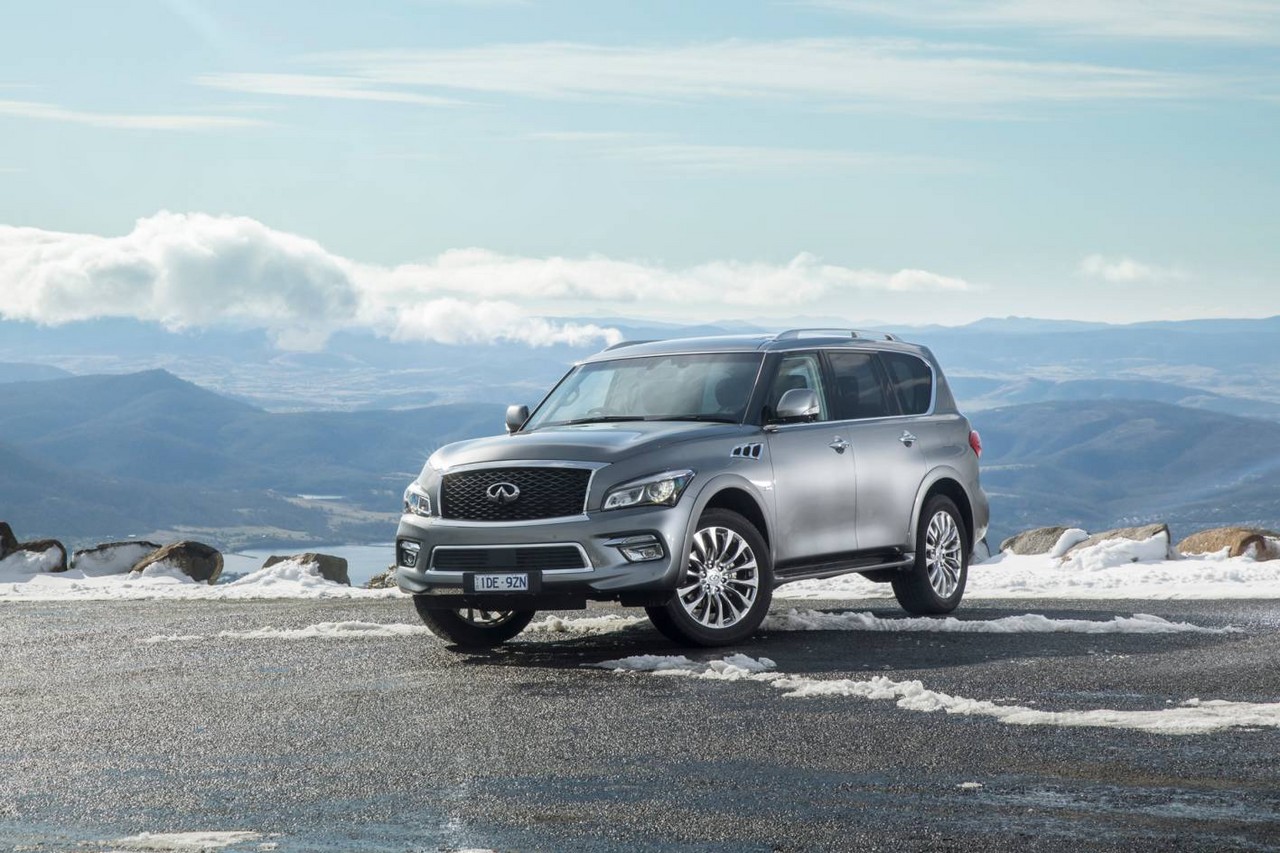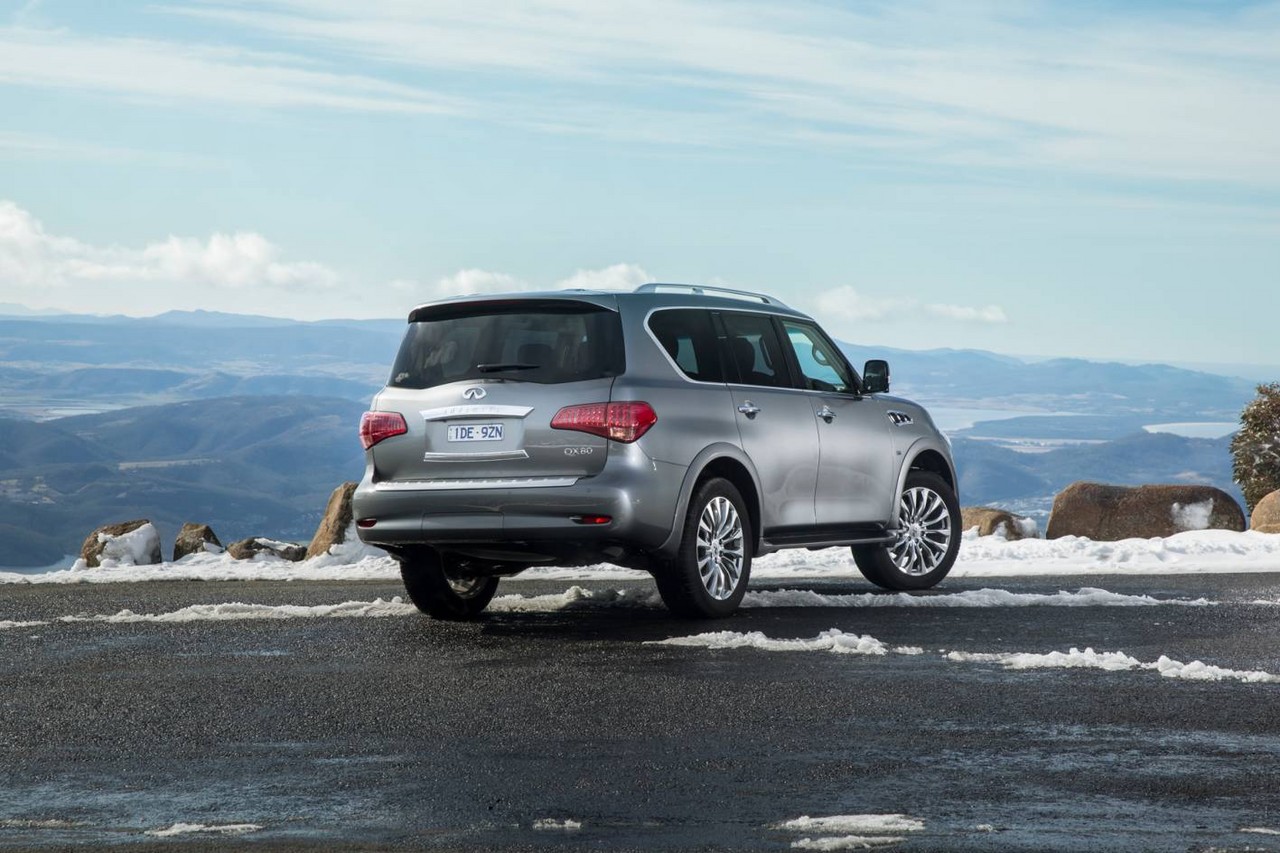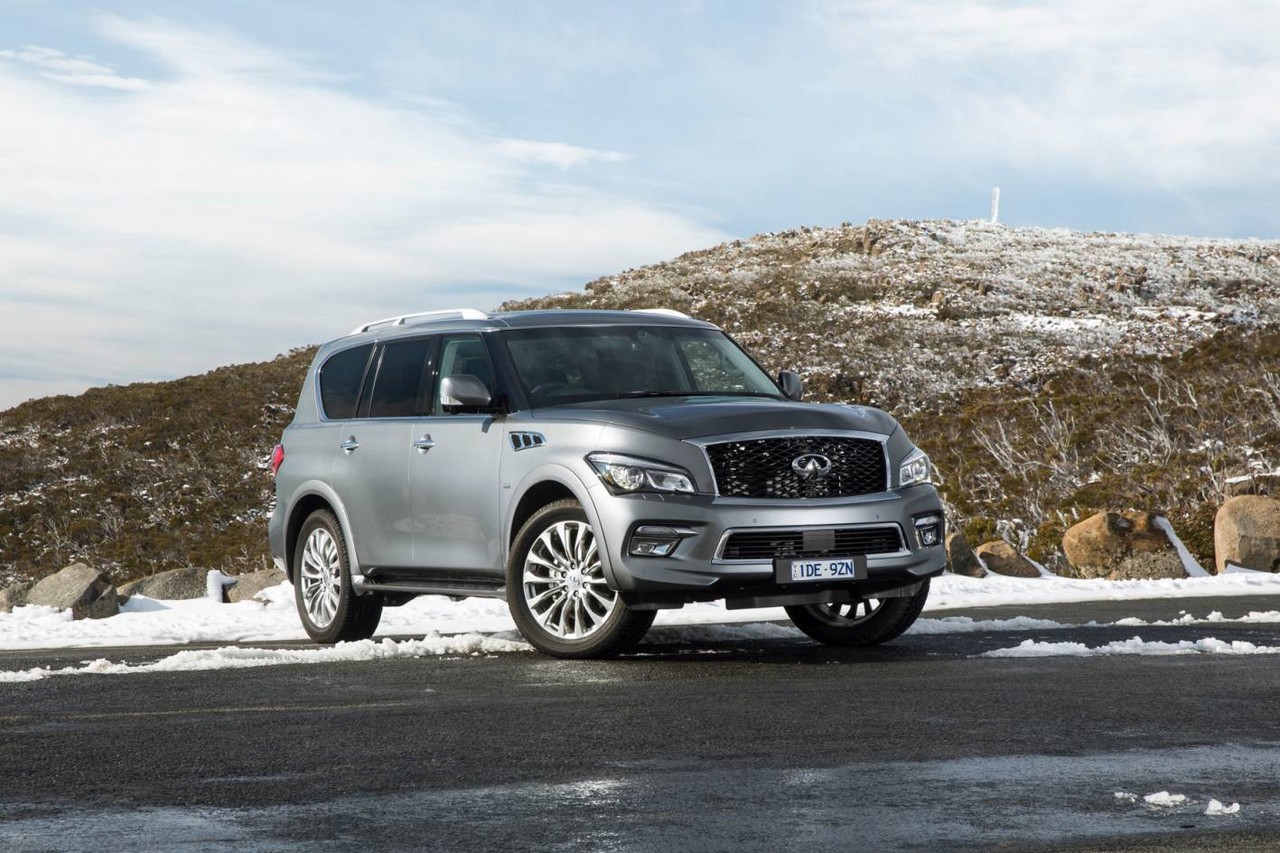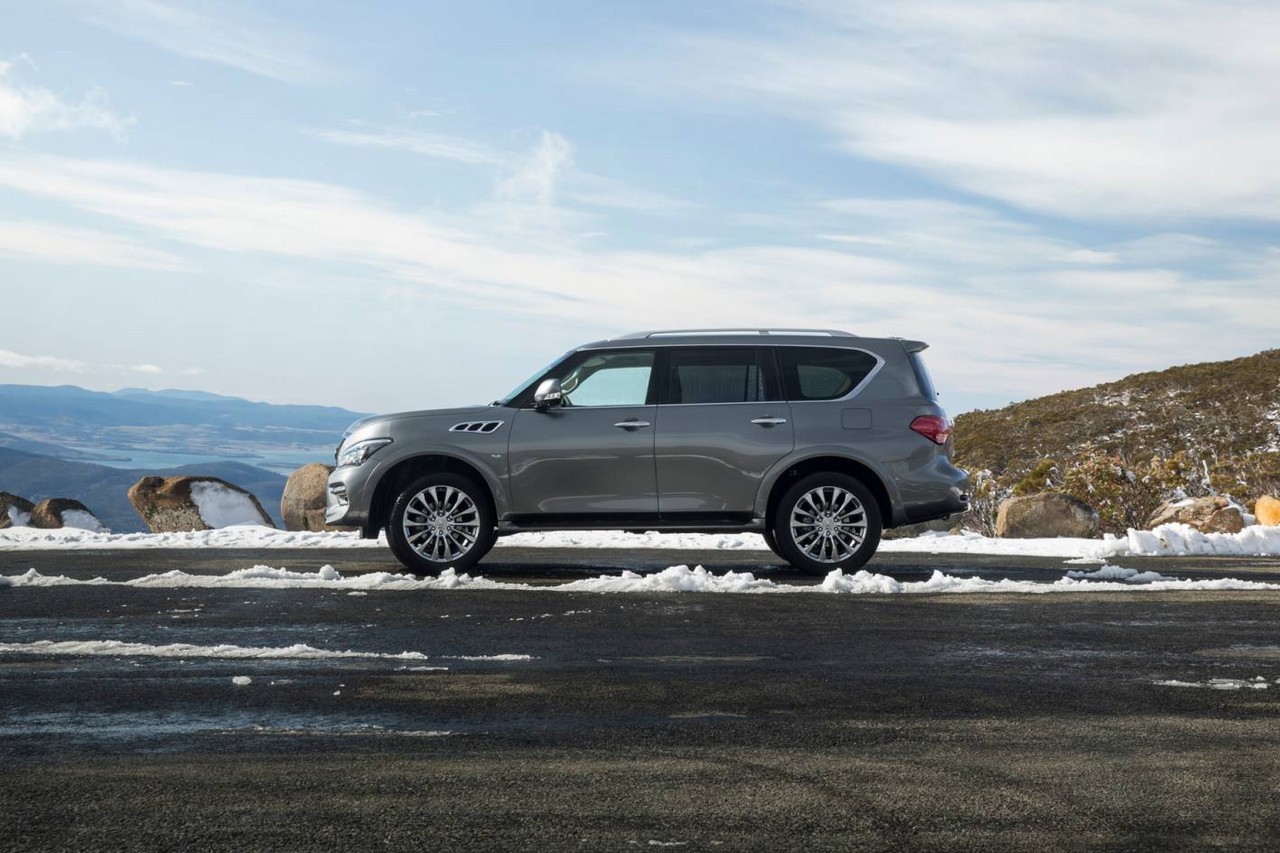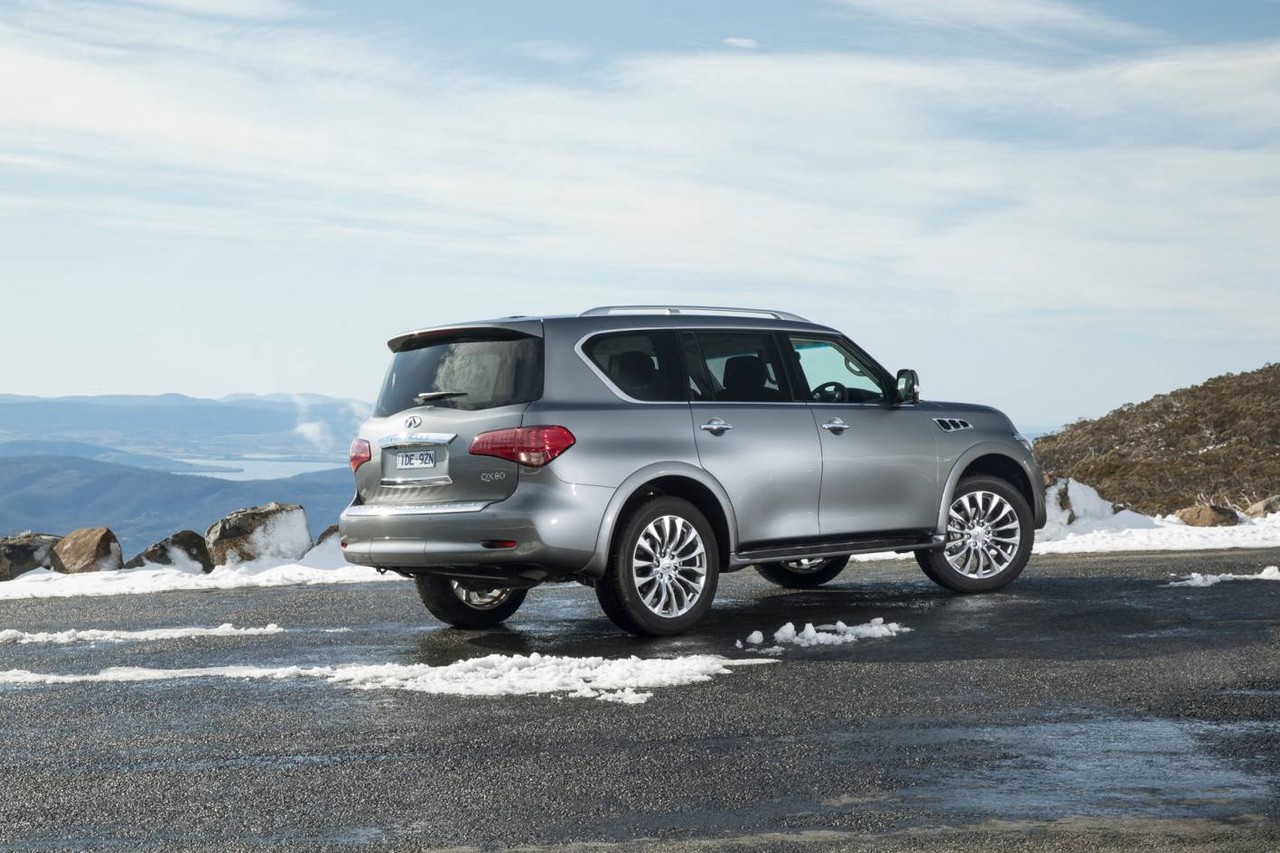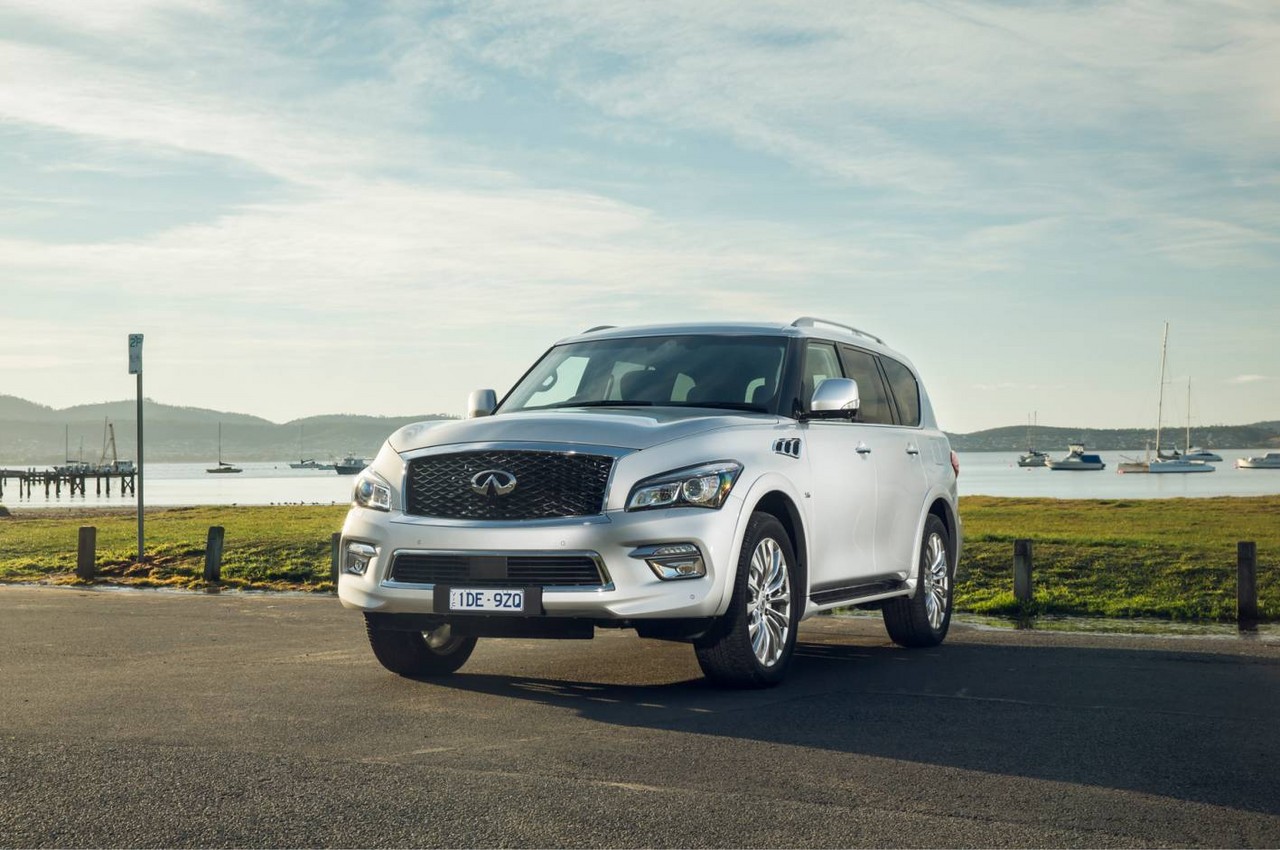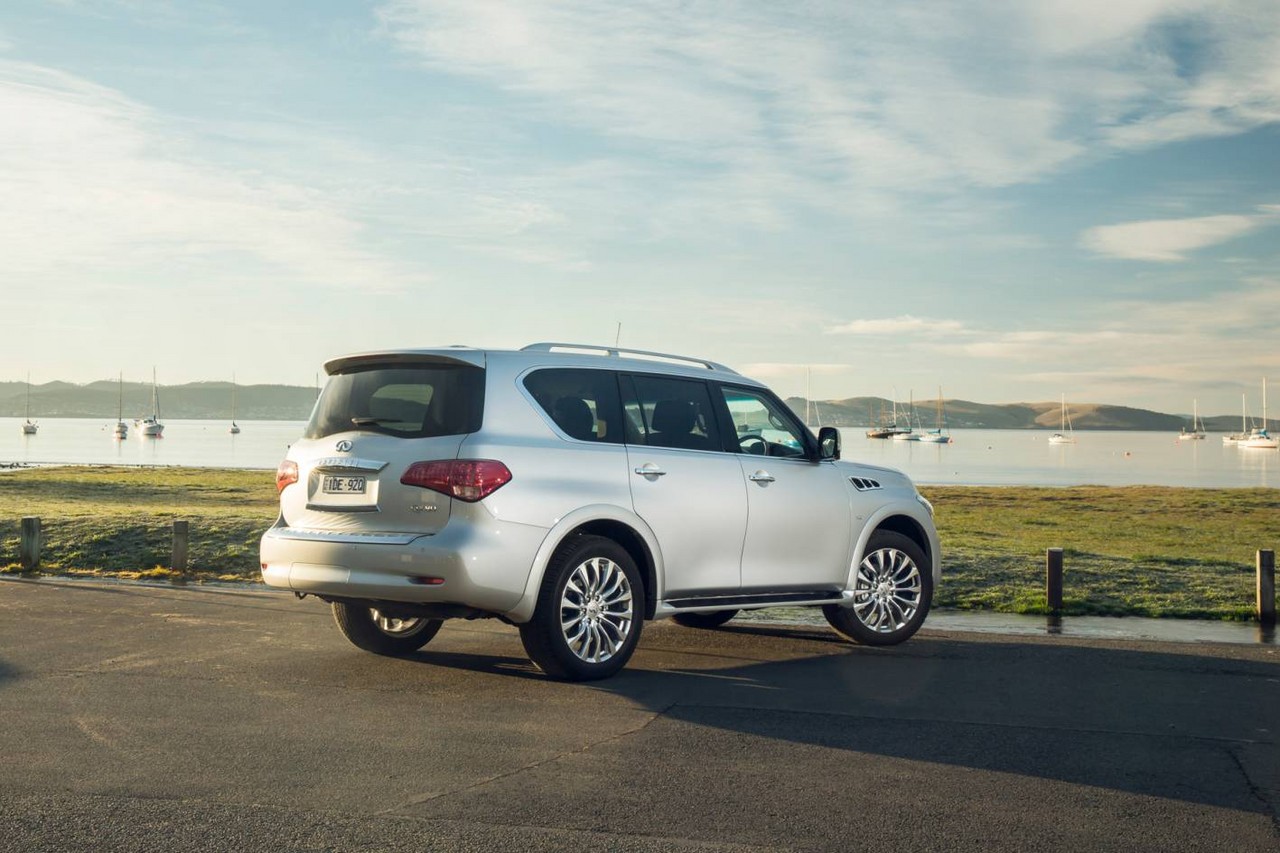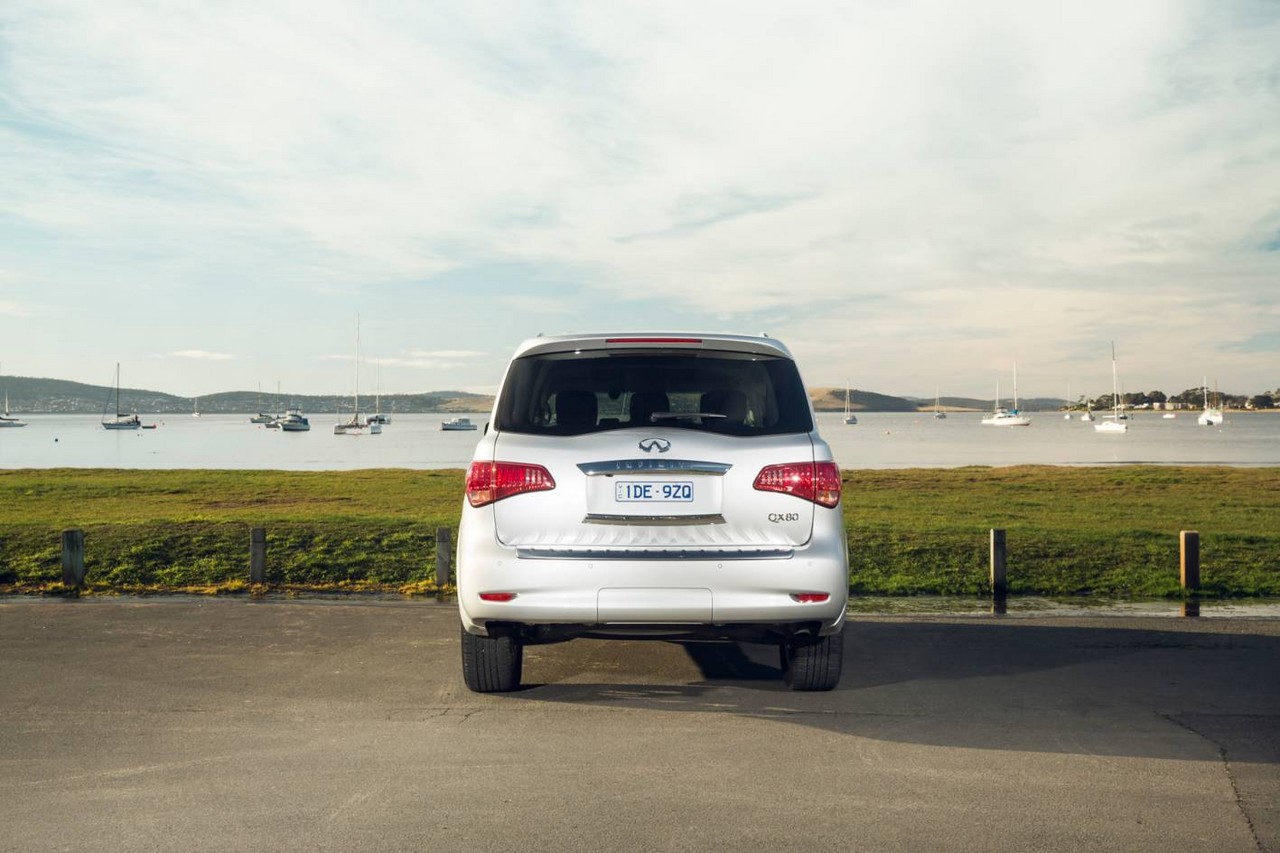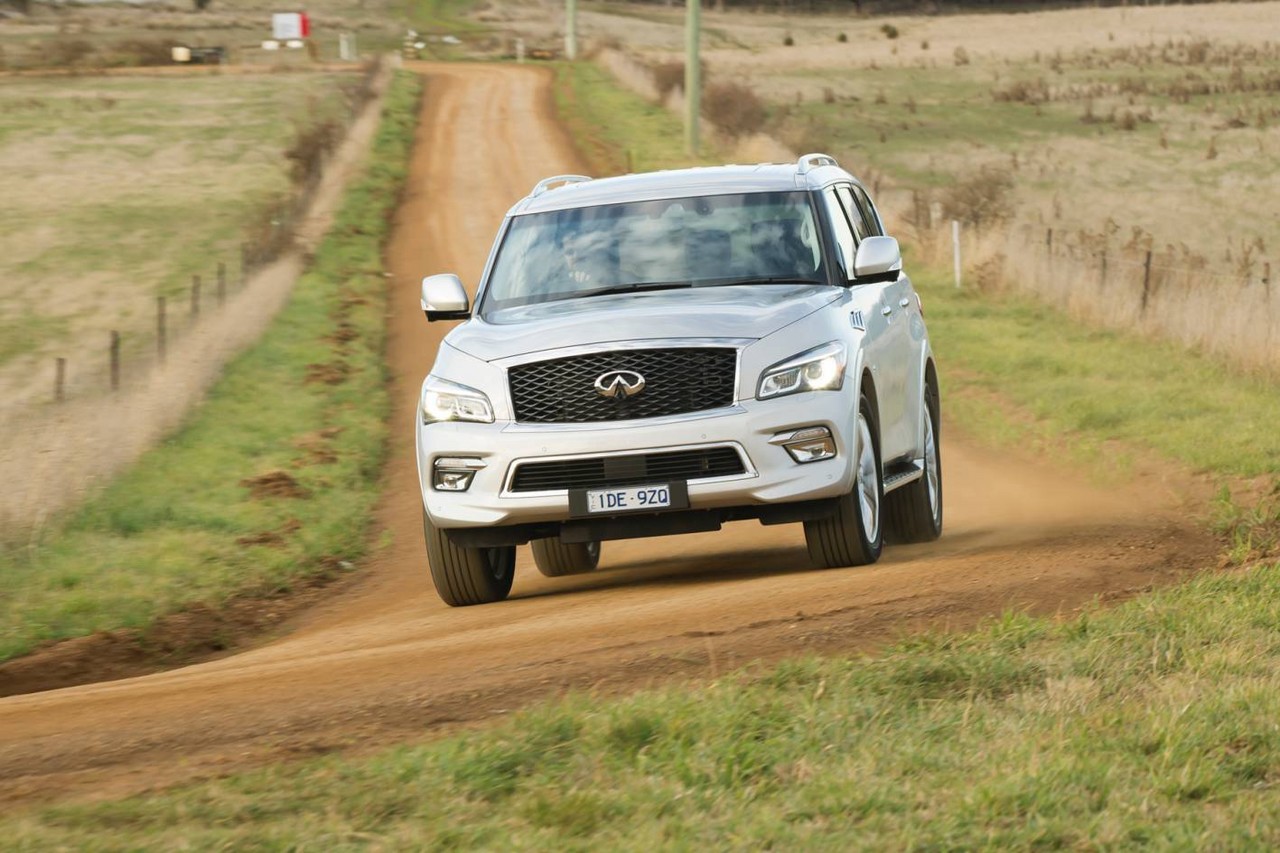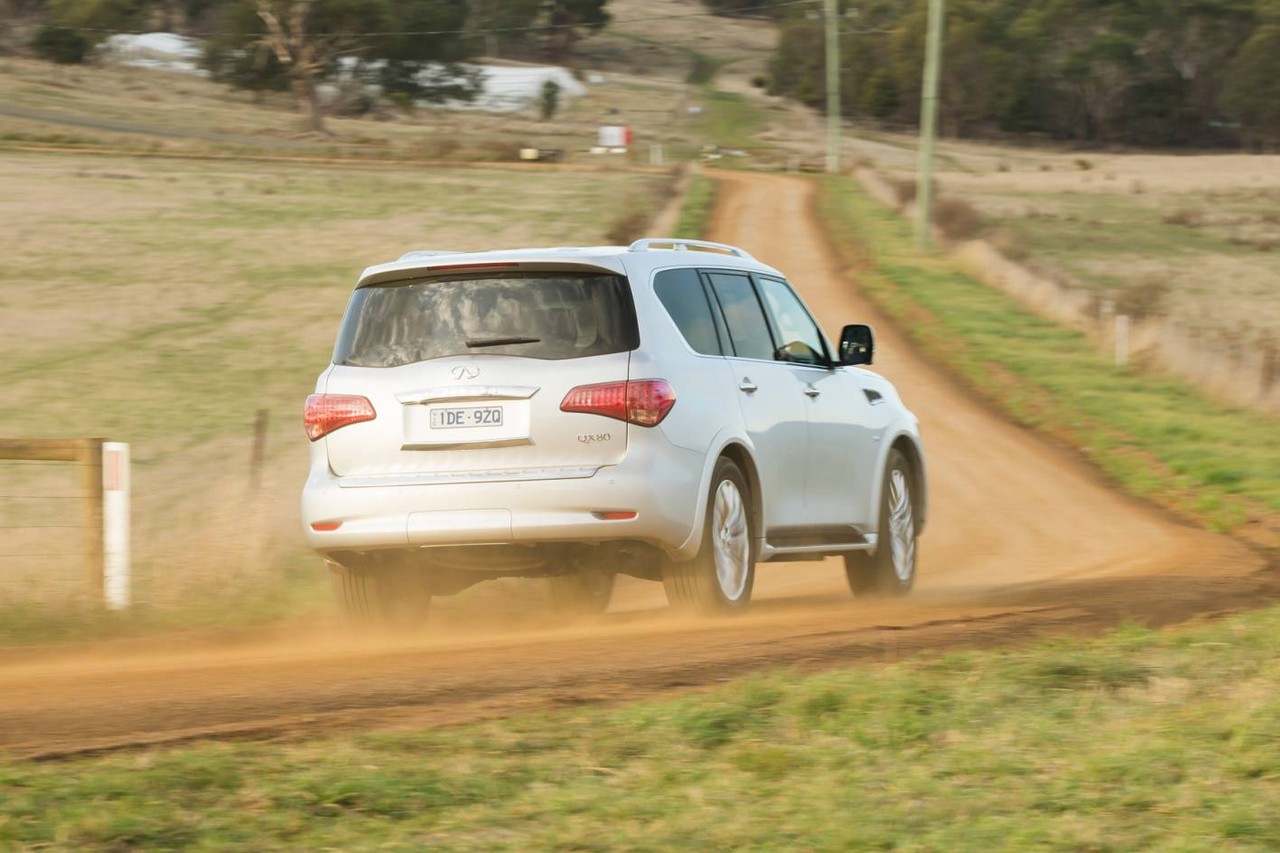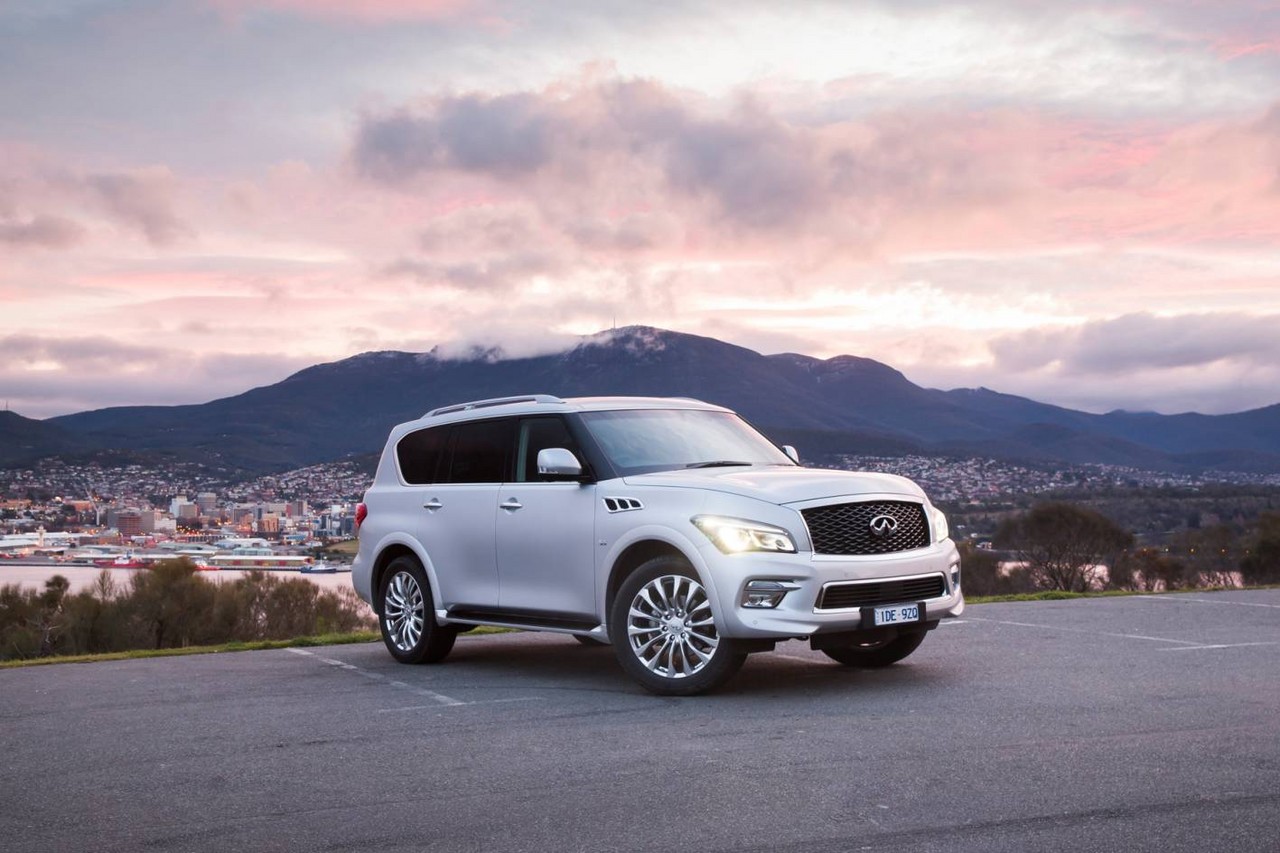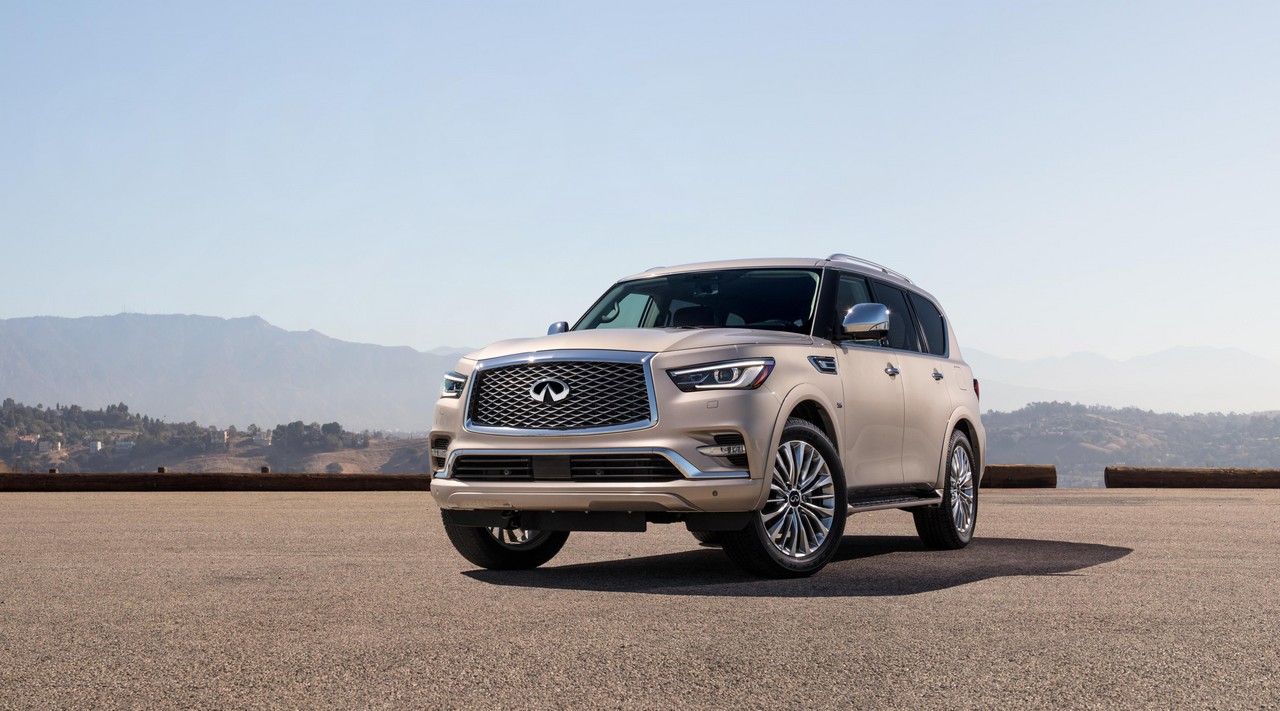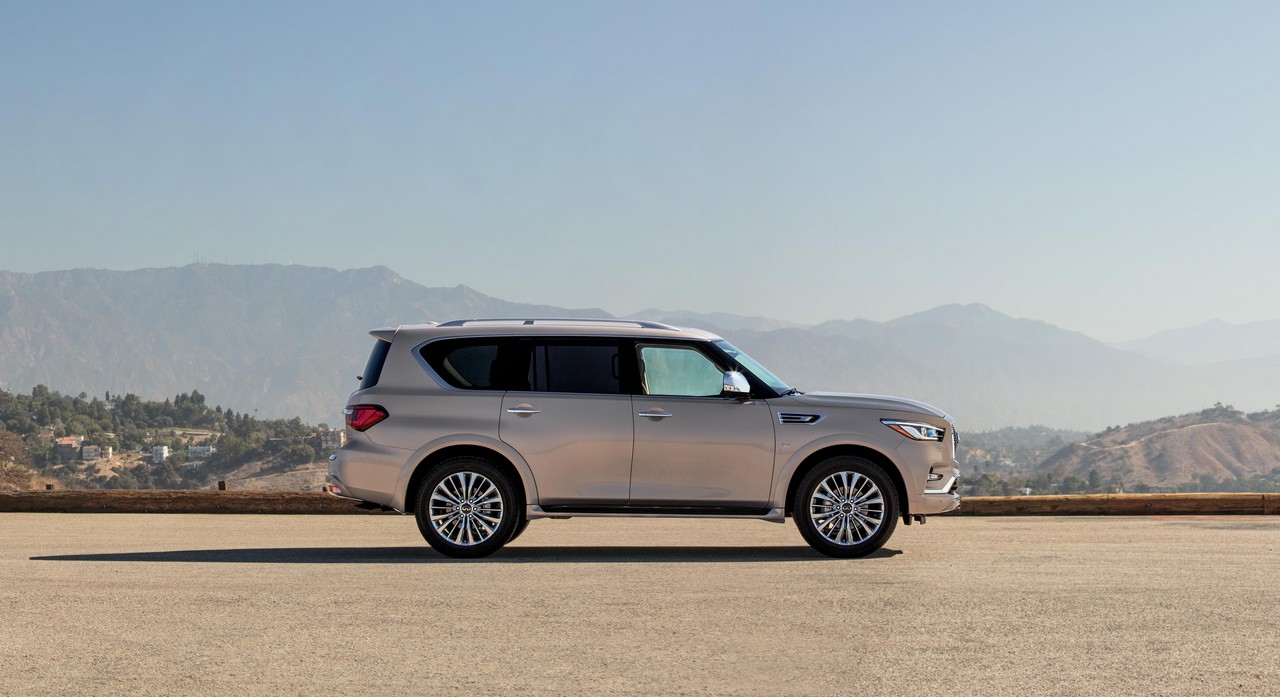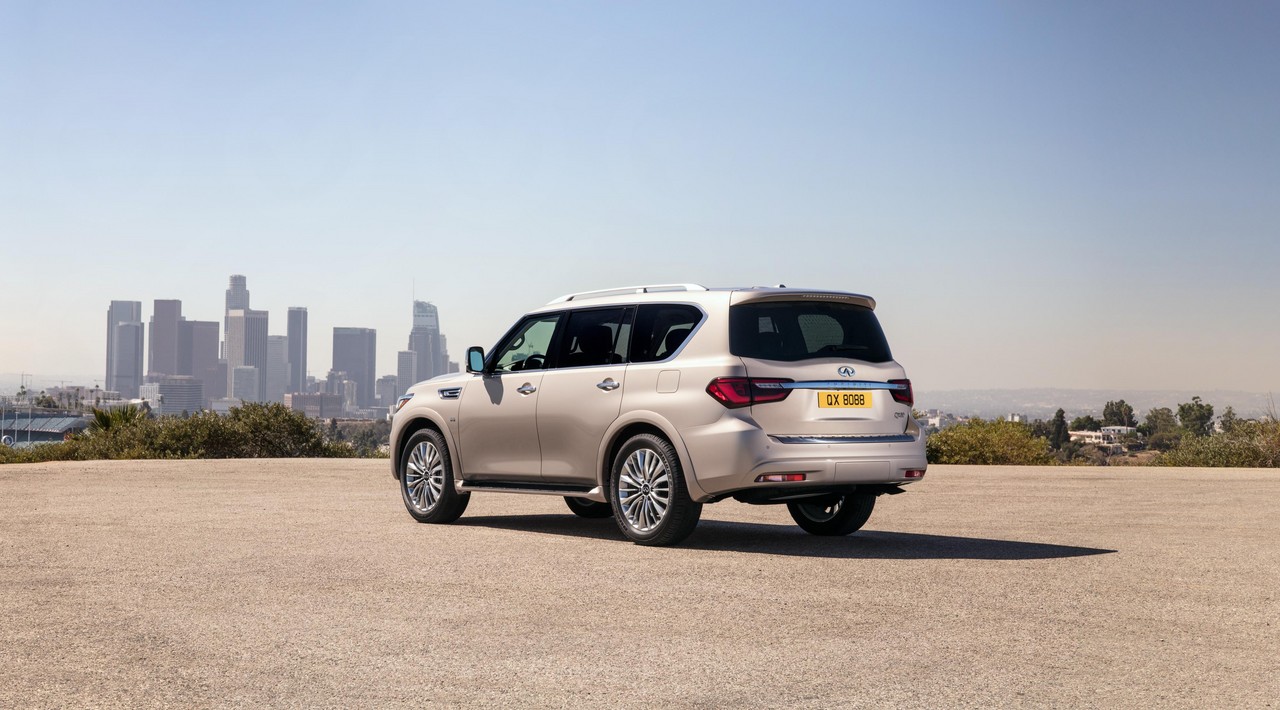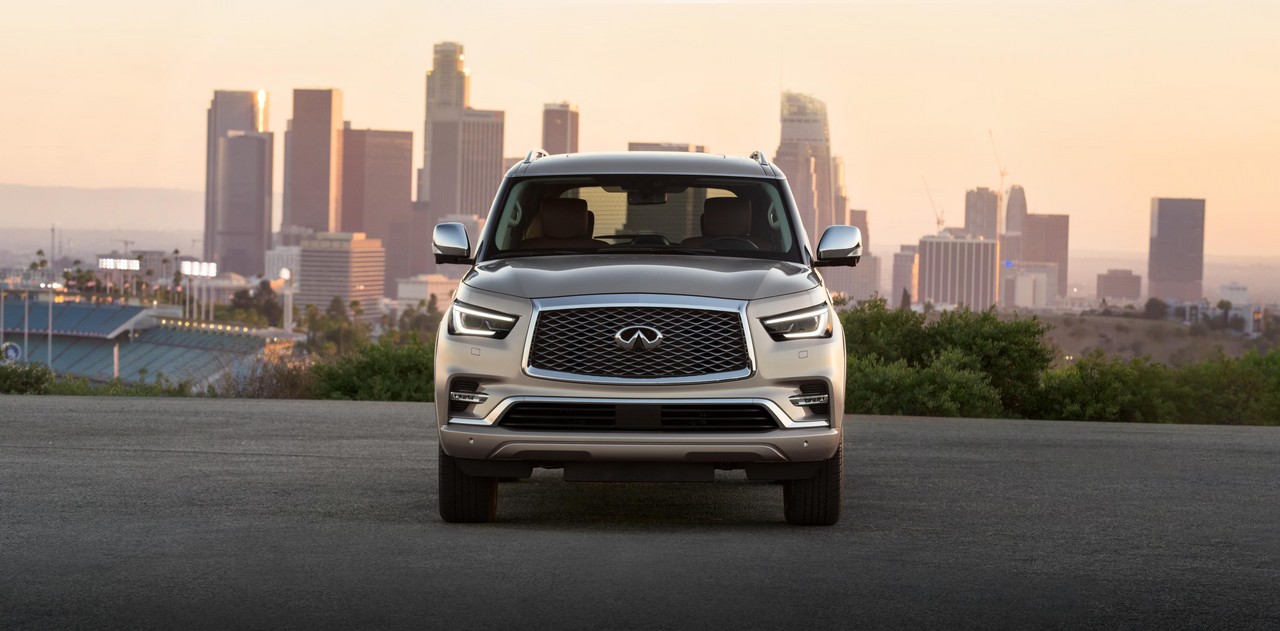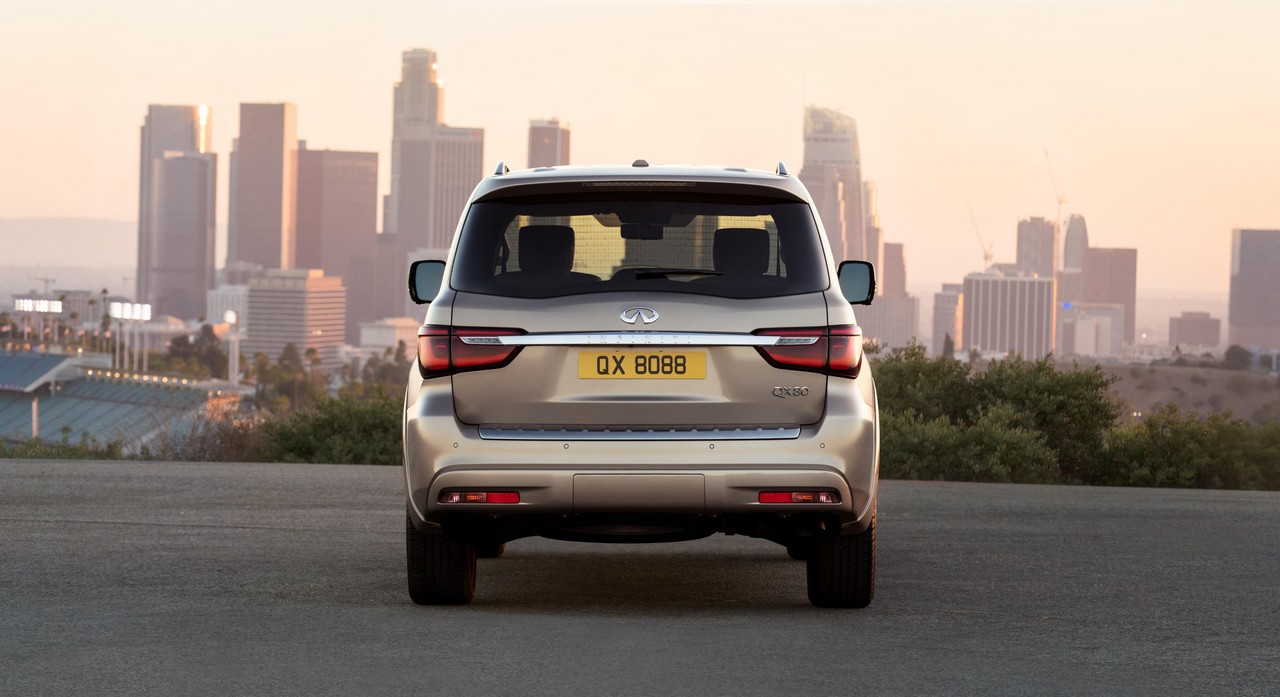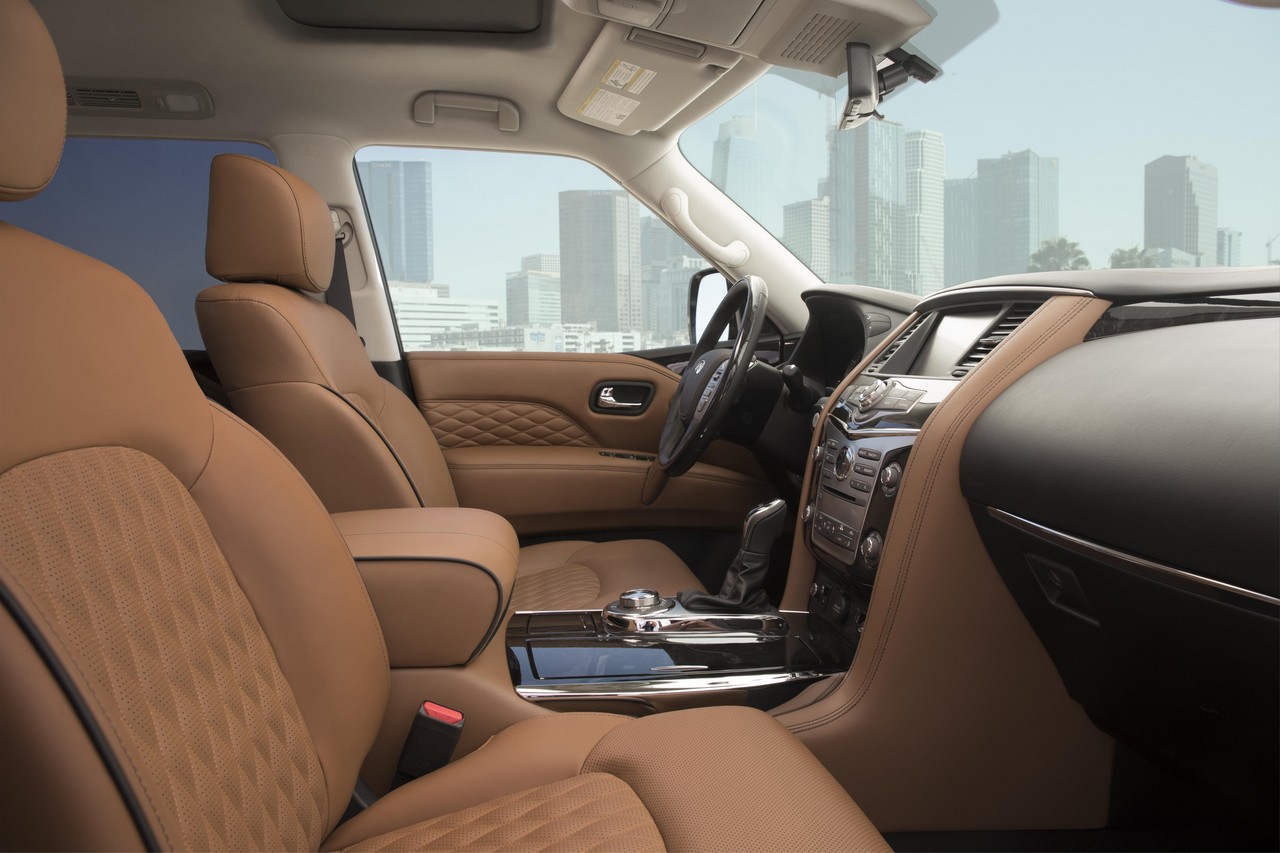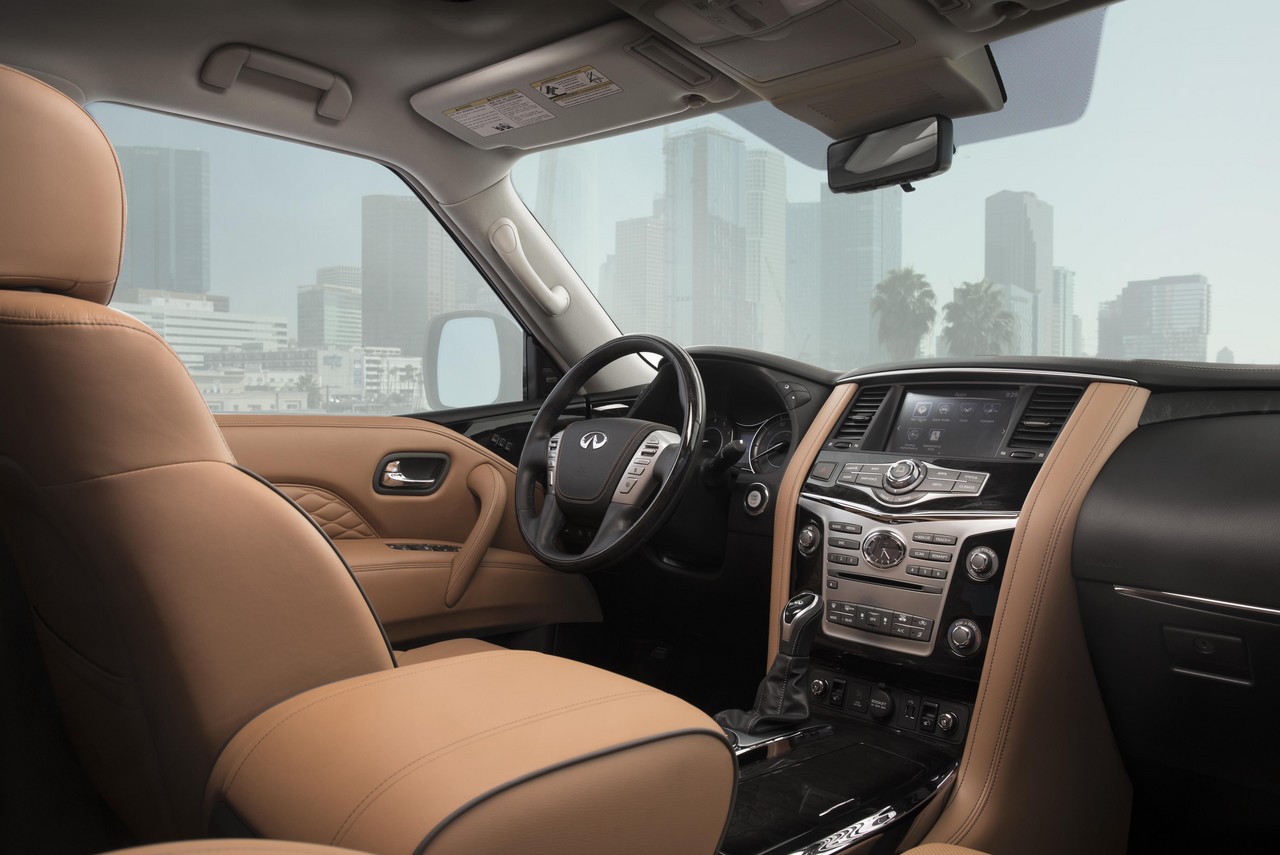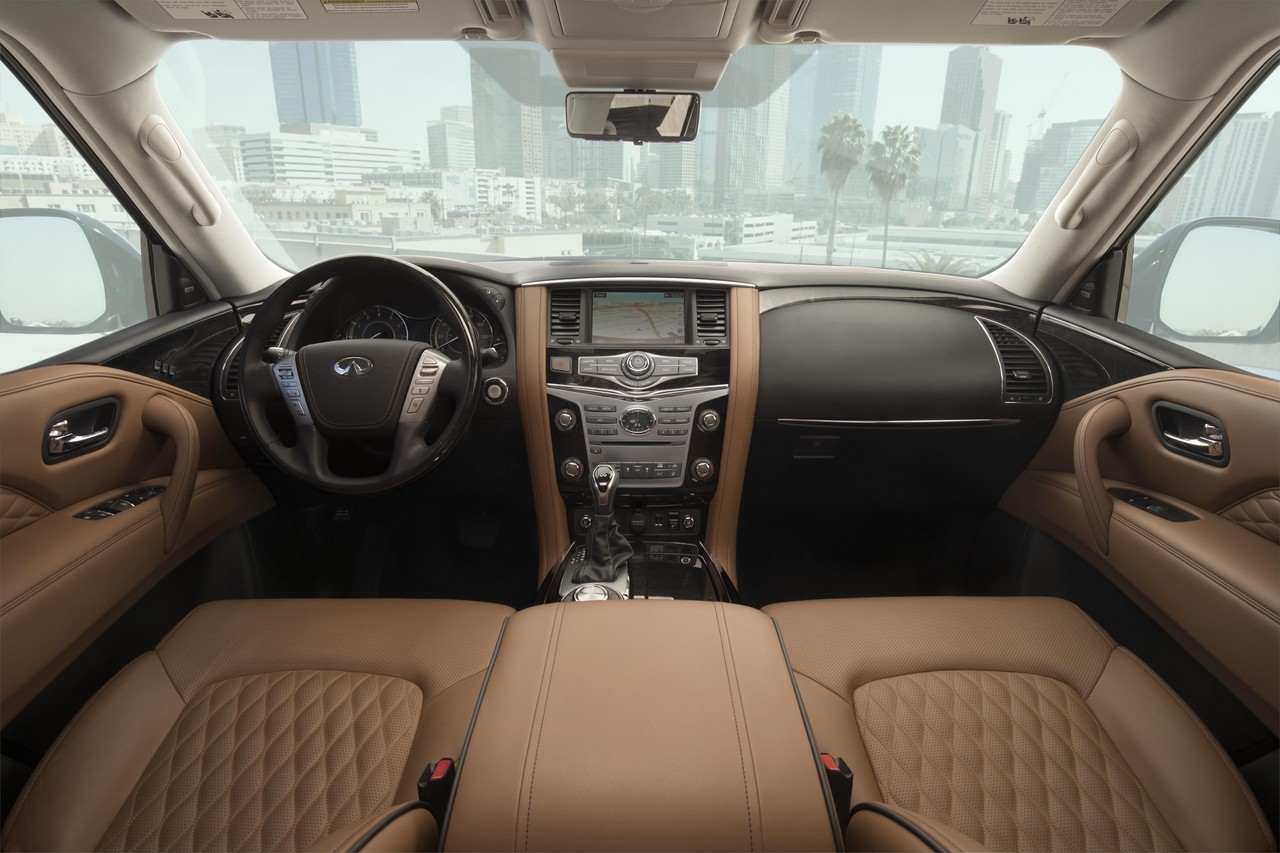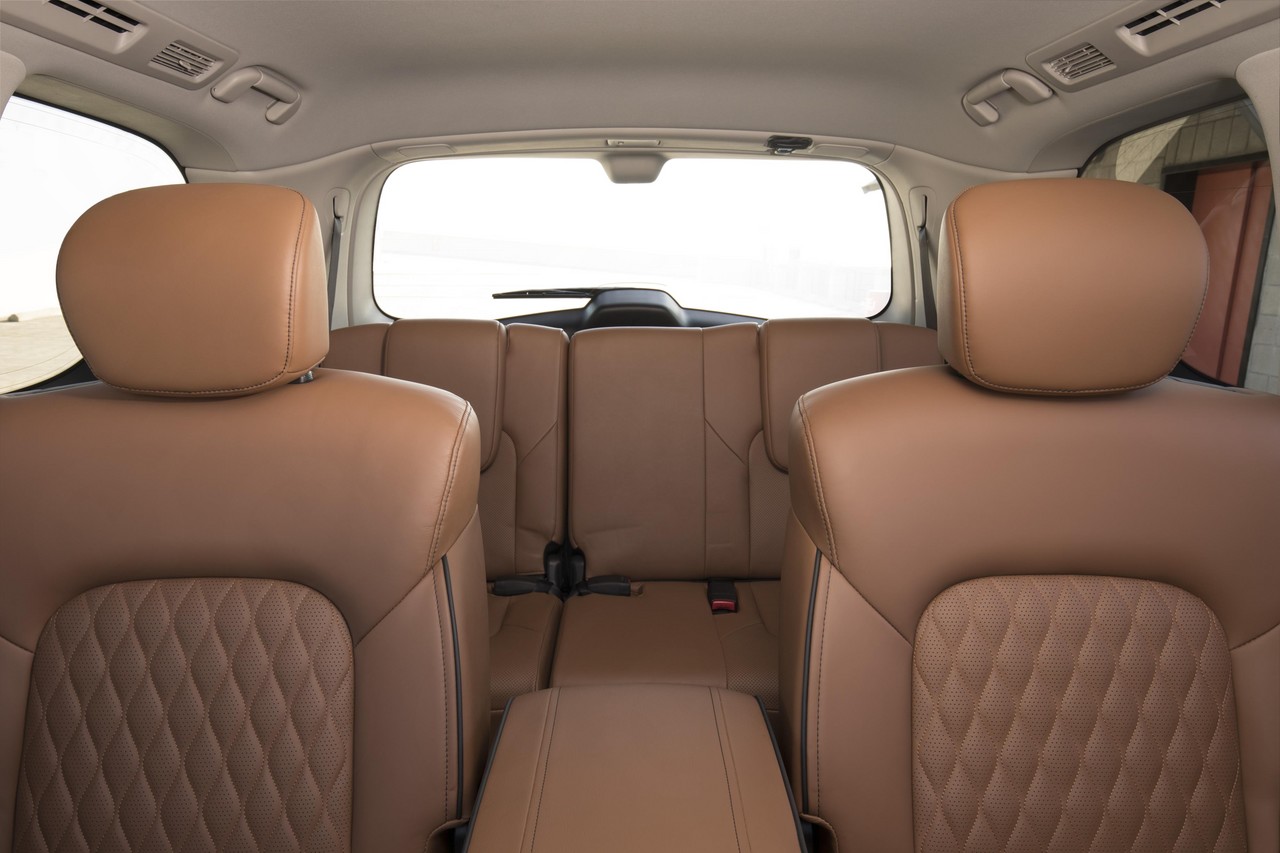
- Powerful 5.6-litre V8 petrol engine
- Quiet, well-insulated cabin
- Spacious interior and cargo area
- Comfortable ride
- Off-road capability
- Ponderous handling
- High fuel consumption
- Ungainly styling
- Price premium over related Nissan Y62 Patrol
- Significant depreciation expected
Review: Infiniti Z62.I QX80 (2015-17)
Overview
Released in Australia in July 2015, the Infiniti Z62 Series I (Z62.I) QX80 was an eight-seat, all-wheel drive wagon. Manufactured in Yukuhashi, Japan, the Infiniti QX80 was powered by a 5.6-litre V8 petrol engine that was mated to a seven-speed automatic transmission.
VK56VD engine
Shared with the related Nissan Y62 Patrol , the Infiniti QX80 was powered Nissan’s 5552 cc VK56VD V8 engine which had an aluminium block and cylinder head, direct petrol injection, double overhead camshafts, four valves per cylinder and Nissan’s ‘Variable Valve Event & Lift’ (or VVEL) which combined hydraulically-controlled variable valve timing and electronically controlled variable inlet valve lift. Furthermore, the engine had a compression ratio of 10.8:1 and produced more than 500 Nm from 2500 rpm.
| Engine | Trans. | Peak power | Peak torque | |
|---|---|---|---|---|
| Infiniti QX80 | 5.6-litre petrol V8 (VK56DE) |
7sp auto | 298 kW at 5800 rpm | 560 Nm at 4000 rpm |
4WD system
The Infiniti QX80 had Nissan’s ‘All-Mode 4WD system’ which consisted of an electronically-controlled multi-plate clutch and a helical limited slip rear differential with locking function. In the normal 4H drive mode, torque was directed to the rear axle to minimise fuel consumption. If traction was lost, however, up to 50 per cent of the engine’s torque could be directed to the front axle.
As part of the All-Mode system, a circular electronic switch cluster located behind the gear selector enabled the driver to:
- Select from sand, rock, snow or on-road drive modes;
- Activate the rear differential lock;
- Turn the electronic stability control on or off; and,
- Engage hill descent control.
Body and dimensions
Compared to the Nissan Y62 Patrol , the Infiniti QX80 was 165 mm longer (at 5305 mm), 52 mm wider (2047 mm) and 5 mm taller (1945 mm), though wheelbase length (3075 mm) was unchanged. Furthermore, the Infiniti QX80 had a kerb weight of 2785 kg.
The Infiniti QX80 had ground clearance of 245 mm, an approach angle of 24.3 degrees, departure angle of 24.5 degrees and ramp angle of 23.6 degrees. Maximum braked towing capacity for the Infiniti QX80 was 3500 kg; unbraked towing capacity was 750 kg.
Suspension
The Infiniti QX80 had independent front and rear suspension with double wishbones and twin-tube shock absorbers. The suspension included Nissan’s ‘Hydraulic Body Motion Control’ (HBMC) system which consisted of hydraulic chambers integrated into each shock absorber – these chambers automatically control suspension travel and were cross-linked to allow for the transfer of hydraulic fluid by nitrogen-charged accumulators from one side of the vehicle to the other. When cornering, the operation of the accumulators increased roll stiffness to reduce the amount of body lean.
Steering
The Infiniti QX80 had hydraulic, speed-sensitive rack and pinion steering.
Safety equipment
Standard safety equipment for the Infiniti QX80 included dual front airbags, front side airbags, full-length curtain airbags, ABS, electronic brake force distribution, brake assist, electronic stability control, traction control, active front seat head restraints and front seatbelts with pretensioners and load limiters.
As standard, the Infiniti QX80 was equipped with the following active safety technologies:
- Intelligent Cruise Control (ICC) and Distance Control Assist (DCA): using a combination of laser sensors, throttle and brake actuators, Intelligent Cruise Control could measure the distance to the vehicle ahead and automatically adjust the vehicle’s speed to maintain a pre-set following distance (selected from three distances via the Distance Control Assist button);
- Intelligent Brake Assist (IBA) with Forward Emergency Braking: if the distance to the vehicle ahead was closing too rapidly, the driver would be prompted to release the throttle and the brakes would be applied automatically to slow the vehicle;
- Forward Collision Warning: operating at speeds above 15 km/h, an alarm would sound to warn the driver when a potential collision was anticipated. Unlike Distance Control Assist, however, Forward Collision Warning did not autonomously brake the vehicle;
- Blind Spot Warning (BSW): illuminated an indicator light if another vehicle was detected in the blind spot area. If the driver then activated the turn signal, the indicator light would flash and an audible warning tone would sound;
- Backup Collision Intervention (BCI): could detect oncoming traffic that may cross the vehicle path and stationary objects behind the vehicle when it was reversing. If detected, the brakes would be engaged momentarily to alert the driver;
- Blind Spot Intervention (BSI): provided selective braking of the wheels on one side of the vehicle to counteract the driver’s attempt to steer into an adjacent lane if another vehicle has been detected in the blind spot area; and,
- Lane Departure Warning (LDW) and Lane Departure Prevention (LDP): used a small camera behind the windscreen to detect lane markers and warn the driver of potential unintended lane departures with visual and audible warnings. If the driver did not return the vehicle toward the centre of the lane and the vehicle is travelling in excess of 70 km/h, the brakes on the opposing side of the drift would be automatically applied to counteract the drift.
Brakes
The Infiniti QX80 had 358 mm by 34 mm ventilated front brake discs with four-piston opposed callipers and 350 mm by 20 mm ventilated rear discs with single piston callipers.
Features: Infiniti QX80
Standard features for the Infiniti QX80 included 8.0J x 22-inch fourteen-spoke forged aluminium alloy wheels with 275/50 R22 all-season tyres, a Bose 5.1 channel surround sound system with fifteen speakers (including two subwoofers), CD player, MP3/WMA compatibility, auxiliary inputs (3.5 mm/USB/iPod), Bluetooth mobile phone connectivity and audio streaming, hard-drive navigation with an eight-inch colour touchscreen and live traffic updates, hard drive for audio storage, three-zone climate control air conditioning, heated and ventilated front seats, heated outboard second row seats, semi-aniline leather-faced seat upholstery, bi-xenon headlights with washers, front fog lights, automatic headlights, rain-sensing wipers, front and rear parking sensors, dual seven-inch colour monitors integrated in the front headrests and wireless headphones, powered 60/40 split and flat folding second row seats, reclining third row seats, a leather-wrapped steering wheel, remote central locking with proximity key (i.e. keyless entry), power adjustable door mirrors with heating and reverse tilt-down functions, auto-dimming door and interior rear view mirrors, power windows, a power adjustable steering column (tilt and telescopic), courtesy lights, push-button start, illuminated vanity mirrors, a 12 volt power outlet, power sliding sunroof, power-operated tailgate, rear privacy glass, floor mats, stainless steel sill plates, roof rails, tyre pressure monitoring, a trip computer, an alarm and immobiliser.
The Infiniti QX80 was also fitted with an ‘Around View Monitor with Moving Object Detection’ which could display different views of the vehicle – from above (bird’s-eye view), the front, rear and sides – to assist with parking.
Paint colours
The Infiniti QX80 was available in Black Obsidian, Moonlight White, Liquid Platinum and Graphite Shadow paint finishes.
Specifications
Related links
Review: Infiniti Z62.II QX80 (2018-19)
Overview
Officially released in Australia in March 2018, the Infiniti Z62 Series II (Z62.II) QX80 introduced updated styling, an upgraded interior, revised suspension and improved soundproofing.
Styling changes
Visually, the Infiniti Z62.II QX80 could be identified by its 20 mm higher leading edge for the bonnet which extended 90 mm further forward, more upright ‘double-arch’ grille, an aluminium strip (beneath the grille to emphasise width) and raised lower section of the front bumper. The Z62.II QX80 also had ‘human eye’ headlamps which used a series of reflective channels to disperse light (Infiniti’s ‘triple light guide technology’). In profile, the Z62.II QX80 had new six-spoke alloy wheels that were finished in dark silver paint and, at the rear, a raised lower bumper section, thinner tail-lamps and straight character lines for the bodywork and light units.
The Infiniti Z62.II QX80 had an improved drag co-efficient of 0.36 Cd. In part, this was achieved through a re-shaped under-body cover which improved air flow, reduced air pressure and directed air away from the rear tyres.
| Engine | Trans. | Peak power | Peak torque | |
|---|---|---|---|---|
| Infiniti QX80 | 5.6-litre petrol V8 (VK56DE) |
7sp auto | 298 kW at 5800 rpm | 560 Nm at 4000 rpm |
Suspension
According to Infiniti, re-tuned shock absorber pistons for the Z62.II QX80 reduced damping forces at each wheel by 30 per cent to better isolate the cabin from high-frequency vibrations. The vertical angle of the radial steel belt in the tyre walls was also changed to reduce vertical deflection by 5 per cent for better absorption of small vibrations and road impacts when driving over rough or broken surfaces.
Safety equipment
As standard, the Infiniti Z62.II QX80 was fitted with a new ‘Smart Rear View Mirror’ which could display video – in the rear view mirror – from a wide-angle camera mounted in the upper rear windscreen.
Interior
Inside, the Infiniti Z62.II QX80 introduced a re-designed steering wheel, a new leather-wrapped gearshift lever and higher-density padding for leather-trimmed surfaces (such as the doors and armrest).The interior of the Infiniti Z62.II QX80 had larger storage spaces. For example,
- The centre console had a larger smartphone storage area (73 mm wide);
- There was a larger 5.4 litre space beneath the front passenger armrest which could hold tablet devices when stood vertically;
- The front cupholders were re-shaped so that they could hold two 1.3 litre cups with handles; and,
- All doors featured storage areas for bottles and other items.
The Infiniti Z62.II QX80 had a wider soundproofing area behind the dashboard panel to reduce engine noise, denser floor carpets and additional soundproofing materials around the cargo area. According to Infiniti, these measures produced a five per cent improvement in the cabin’s articulation index score.
Features
The Infiniti Z62.II QX80 had an upgraded rear entertainment system which featured eight-inch screens with 960 x 540 pixel resolution (previously seven-inch screens with 800 x 480 pixels) that could display separate content, a new HDMI auxiliary port and support for thirty-19e languages (previously three). Whereas the Z62.I QX80 provided wireless headphone support, the Z62.II QX80 added 3.5 mm auxiliary jacks for two rear passengers. The Z62.II QX80 also introduced an updated ‘InTouch’ infotainment system which had revised dashboard buttons and customisation of apps and icons on the touchscreen.
The Infiniti Z62.II QX80 was also available with ‘Remote Engine Start’ and ‘Remote Horn and Lights’ functions which enabled the driver to control these functions remotely using a smartphone.
Related links
